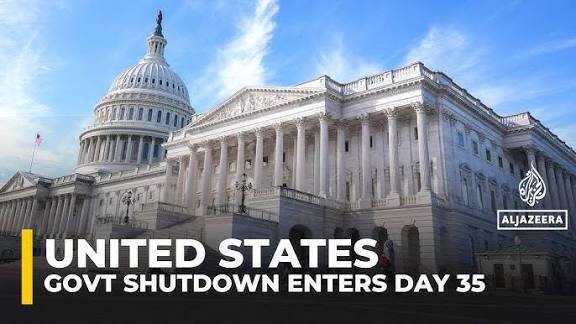The United States government shutdown has stretched into its 36th day, marking the longest closure in the nation’s history. The impasse, which began on October 1, stems from Congress’s failure to agree on a new funding bill, leaving hundreds of thousands of federal employees unpaid and millions of Americans without essential government services.
The deadlock between Democrats and Republicans has persisted for weeks, with neither side willing to compromise on key budgetary and policy disputes. However, there are faint signs of movement as some lawmakers express cautious optimism about a possible resolution.
Senate Majority Leader John Thune, the chamber’s top Republican, hinted at potential progress, saying his instincts suggest an end may be in sight. “I just think, based on my gut of how these things operate, I think we’re getting close to an off-ramp here,” Thune told reporters.
The ongoing stalemate has now surpassed the previous record shutdown, which lasted 35 days during Donald Trump’s presidency in 2019.
Meanwhile, the ripple effects across the country have become increasingly severe. Tens of thousands of federal workers have already missed paycheques, and concerns are mounting over the strain on public services, particularly air travel, as air traffic controllers and airport staff continue to work without pay.
Economists warn that the prolonged shutdown could begin to dent the broader US economy if it drags on much longer, with delays in key sectors such as transport, public safety, and social services likely to deepen.







